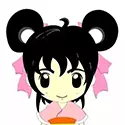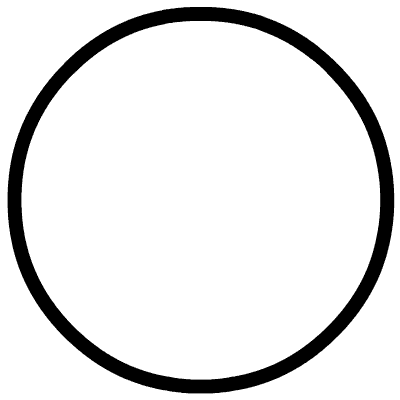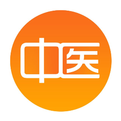
Editor: Xiao Yaotong
The author Lin Haiyan is a fourth-term disciple of Master Xiao Xiangru, and this article was written at the conclusion of the study phase of the “Essentials of the Golden Chamber”. Sister Lin has clearly summarized her thoughts on the formulas prescribed by Zhang Zhongjing during her study of the “Essentials of the Golden Chamber”, which is highly enlightening. Therefore, it is shared here today for mutual reference and exchange among peers.
▍Total word count: 2275, estimated reading time: 6 minutes
The “Essentials of the Golden Chamber” is an important component of Zhang Zhongjing’s academic thought. Through the master’s explanations, personal copying, and translation studies, I have gained a deeper understanding of the formulas and medicinal applications recorded in the “Essentials of the Golden Chamber”.1. Most formulas in the “Essentials of the Golden Chamber” reflect the specific application of the “Eight Methods”.For example: Gui Zhi Tang (Cinnamon Twig Decoction) is a method for inducing sweating; Gua Di San (Melon Stem Powder) is for inducing vomiting; Cheng Qi Tang (Purge the Qi Decoction) is for purging; Xiao Chai Hu Tang (Minor Bupleurum Decoction) is for harmonizing; Da Wu Tou Jian (Major Aconite Decoction) and Tong Mai Si Ni Tang (Unblock the Pulse Decoction) are warming methods; Bai Hu Jia Ren Shen Tang (White Tiger Decoction with Ginseng) and Bai Tou Weng Tang (Pulsatilla Decoction) are clearing methods; Bie Jia Jian Wan (Soft-Shelled Turtle Pill) and Zhi Zhu Wan (Atractylodes Pill) are for resolving; Dang Gui Sheng Jiang Yang Rou Tang (Angelica, Ginger, and Lamb Soup) and Shen Qi Wan (Kidney Qi Pill) are for tonifying.In addition to the above eight methods, if we further categorize the treatment methods reflected in the formulas of the “Essentials of the Golden Chamber”, we also have:Exterior and Interior Dual Resolution Method: such as Hou Po Qi Wu Tang (Magnolia Bark Seven Herbs Decoction), Da Chai Hu Tang (Major Bupleurum Decoction), Yue Bi Tang (Yue Bi Decoction), Da Qing Long Tang (Major Blue Dragon Decoction), Xiao Qing Long Tang (Minor Blue Dragon Decoction), She Gan Ma Huang Tang (Belamcanda and Ephedra Decoction), Wu Tou Gui Zhi Tang (Aconite and Cinnamon Twig Decoction), etc.; Stabilizing and Astringing Method: such as Gui Zhi Jia Long Gu Mu Li Tang (Cinnamon Twig Decoction with Dragon Bone and Oyster Shell), Tao Hua Tang (Peach Blossom Decoction), etc.;Hemostatic Method: such as Huang Tu Tang (Yellow Earth Decoction), Bai Ye Tang (White Leaf Decoction), Jiao Ai Tang (Gelatin and Mugwort Decoction), etc.;Moistening and Dryness Resolving Method: such as Mai Men Dong Tang (Ophiopogon Decoction); Moisture Resolving Method: such as Wu Ling San (Five-Ingredient Powder with Poria), Yin Chen Wu Ling San (Yin Chen Five-Ingredient Powder), Zhu Ling Tang (Polyporus Decoction), Ling Gui Zhu Gan Tang (Poria, Cinnamon, Atractylodes, and Licorice Decoction), etc.For example, within the category of Resolving formulas, their uses also differ. For instance, Zhi Zhu Wan focuses on regulating the Qi Level, while Bie Jia Jian Wan emphasizes Activating Blood Stasis; there are also Moisture Resolving and Diuretic methods like Fang Ji Fu Ling Tang (Stephania and Poria Decoction) and Phlegm Resolving methods like Xiao Ban Xia Tang (Minor Pinellia Decoction), which can be further distinguished within the resolving category. Hence, it is said that “within the Eight Methods, there are a hundred methods available.”2. The formulas in the “Essentials of the Golden Chamber” closely adhere to the pathogenesis, with rigorous principles and refined medicinal applications, allowing for flexible adjustments.For example, the famous formula for treating chest obstruction, Gua Lou Xie Bai Bai Jiu Tang (Trichosanthes, Chinese Chive, and White Wine Decoction), consists of three ingredients: Gua Lou (Trichosanthes) opens the phlegm blockage in the chest, Xie Bai (Chinese Chive) promotes Yang and moves Qi, and Bai Jiu (White Wine) enhances the medicinal power, collectively achieving the effects of unblocking Yang, resolving phlegm, and descending Qi, thus alleviating symptoms of chest obstruction. If the patient presents with inability to lie down and heart pain radiating to the back, indicating water retention, and the condition is slightly severe, then Ban Xia (Pinellia) is added to descend the water retention, resulting in Gua Lou Xie Bai Ban Xia Tang (Trichosanthes, Chinese Chive, and Pinellia Decoction). If symptoms such as “stomach fullness, chest tightness, and rib-side reversal” are present, then Zhi Shi (Bitter Orange), Hou Po (Magnolia Bark), and Gui Zhi (Cinnamon Twig) are added to descend the Qi in the chest and rib-side, resulting in Zhi Shi Xie Bai Gui Zhi Tang (Bitter Orange, Chinese Chive, and Cinnamon Twig Decoction), which is more potent than the previous two formulas.Similarly, when using Xiao Qing Long Tang (Minor Blue Dragon Decoction) to treat cough and wheezing due to phlegm retention, if the root cause is cold phlegm, then Gan Jiang (Dried Ginger), Xi Xin (Asarum), and Wu Wei Zi (Schisandra) must be included. If there is Yang deficiency with water Qi rising, then Gui Zhi must be included. If water retention causes vomiting, then Ban Xia must be included. If there is blood deficiency with edema, to prevent Ma Huang from being detrimental to blood deficiency, then Xing Ren (Apricot Kernel) is used instead. If there is indeed stomach heat rising, presenting with “face hot like intoxication,” then Da Huang (Rhubarb) is added. Therefore, Tang Zonghai believes: “Zhongjing’s method of using medicine relies entirely on the syndrome; for one syndrome, add one medicine; for a changed syndrome, change one medicine.” (from “Shallow Annotation and Correction of the Essentials of the Golden Chamber”) This exemplifies the principle of treating the root of the disease, adjusting the medicine according to changes in symptoms.Furthermore, Yue Bi Tang (Yue Bi Decoction) is originally used to expel water Qi, but if Shu (Atractylodes) is added, it becomes Yue Bi Jia Shu Tang (Yue Bi Decoction with Atractylodes), which can be used to treat wind-dampness. If Ban Xia is added, it becomes Yue Bi Jia Ban Xia Tang (Yue Bi Decoction with Pinellia), which can be used to treat lung distension.The adjustments in the dosage of herbs in the formulas of the “Essentials of the Golden Chamber” are also noteworthy.For instance, in Gui Zhi Jia Gui Tang (Cinnamon Twig Decoction with Cinnamon), the increased dosage of Gui Zhi is used to treat the condition of Ben Tun Qi (running piglet qi); in Xiao Jian Zhong Tang (Minor Construct the Middle Decoction), the increased dosage of Shao Yao (Peony) (with added honey) is used to balance Yin and Yang; in Tong Mai Si Ni Tang (Unblock the Pulse Decoction), the increased dosage of Gan Jiang (Dried Ginger) is used to warm the middle and support Yang; and in the formulas Hou Po San Wu Tang (Magnolia Bark Three Herbs Decoction) and Hou Po Da Huang Tang (Magnolia Bark and Rhubarb Decoction), as well as Xiao Cheng Qi Tang (Minor Purge Decoction), all consist of Da Huang (Rhubarb), Zhi Shi (Bitter Orange), and Hou Po (Magnolia Bark), but due to different dosages, their main treatments vary.3. The “Essentials of the Golden Chamber” emphasizes the accurate and clever selection and use of herbs. Zhang Zhongjing not only values the original therapeutic functions of single herbs but also pays attention to the synergistic effects produced by herbal combinations:1. Emphasis on the unique effects of single herbs: For example, Bai He (Lily) is primarily used for Bai He disease; Hu Huo disease is treated with Ku Shen Tang (Sophora Root Decoction) for fumigation; Yin poison or Yang poison is treated with Sheng Ma (Cimicifuga) and Bie Jia (Soft-Shelled Turtle) for detoxification; malaria is treated with Shu Qi; jaundice is treated with Yin Chen (Artemisia) and so on, all indicating that there are specific herbs for specific diseases.2. Attention to the synergistic effects produced by herbal combinations: The effects produced by herbal combinations do not equal the sum of the effects of the individual herbs used in the formula. For example, in cases of overflow and pain with agitation, where the evil is strong on the surface and there is also heat, Da Qing Long Tang (Major Blue Dragon Decoction) can be used to induce sweating while clearing heat. However, looking at the ingredients of Da Qing Long Tang, none of the seven herbs—Ma Huang (Ephedra), Gui Zhi (Cinnamon Twig), Xing Ren (Apricot Kernel), Gan Cao (Licorice), Jiang (Ginger), Jujube (Date), and Shi Gao (Gypsum)—specifically serve to relieve pain. Therefore, from the perspective of the original effects of the individual herbs, it is difficult to understand the efficacy of the formula. In fact, these herbs, when combined in Da Qing Long Tang, can effectively remove water, relieve pain, and eliminate agitation. Thus, Zhang Zhongjing’s use of herbs emphasizes the comprehensive effects produced by herbal combinations, which is the precious aspect of classical formulas and a characteristic of the “Essentials of the Golden Chamber”.3. Zhang Zhongjing has rich experience in the application of herbal combinations: For example:Ma Huang and Shi Gao can be combined to release the exterior and clear the interior, used to treat wind-water or cough and wheezing, as in Yue Bi Tang and Da Qing Long Tang; with Hou Po, it can disperse water and descend Qi, used for cough with a floating pulse, as in Hou Po Ma Huang Tang (Magnolia Bark and Ephedra Decoction); with Bai Zhu, it can disperse cold dampness, used for cold dampness on the surface, allowing sweating without excessive sweating, as in Ma Huang Jia Zhu Tang (Ephedra and Atractylodes Decoction); with Yi Ren, it can lightly disperse and warm, used for wind-dampness on the surface, as in Ma Xing Yi Gan Tang (Ephedra, Apricot Kernel, and Job’s Tears Decoction); with Wu Tou, it can expel cold and relieve pain, used for cold dampness during the seasons, as in Wu Tou Tang (Aconite Decoction); with Ban Xia, it can open the lungs and harmonize the stomach, stop wheezing and vomiting, used for water retention causing heart palpitations, as in Ban Xia Ma Huang Wan (Pinellia and Ephedra Pill).Similarly, the application of Gui Zhi: when combined with Fu Zi (Aconite), it can treat wind-dampness with exterior Yang deficiency, as in Gui Zhi Fu Zi Tang (Cinnamon Twig and Aconite Decoction); when combined with Shao Yao, Ginger, and Jujube, it can release the exterior and harmonize Ying and Wei, regulate Qi, and balance Yin and Yang, as in Gui Zhi Tang (Cinnamon Twig Decoction); when combined with Huang Qi (Astragalus) and Jiao Yi (Honey), it can establish Middle Qi, as in Xiao Jian Zhong Tang (Minor Construct the Middle Decoction) and Huang Qi Jian Zhong Tang (Astragalus Construct the Middle Decoction); when combined with Gua Lou and Xie Bai, it can open the chest obstruction, as in Zhi Shi Xie Bai Gui Zhi Tang (Bitter Orange, Chinese Chive, and Cinnamon Twig Decoction); when combined with Ling and Zhi, it can warm and transform water retention, as in Wu Ling San (Five-Ingredient Powder with Poria) and Ling Gui Zhu Gan Tang (Poria, Cinnamon, Atractylodes, and Licorice Decoction); when combined with Fu Ling and Wu Wei Zi, it can descend Qi and calm the counterflow, as in Gui Ling Wu Wei Gan Cao Tang (Cinnamon, Poria, Schisandra, and Licorice Decoction); when combined with Wu Tou, it can disperse cold and relieve pain, as in Wu Tou Gui Zhi Tang (Aconite and Cinnamon Twig Decoction); when combined with Shi Gao and Zhi Mu, it can treat warm malaria, as in Bai Hu Jia Gui Zhi Tang (White Tiger Decoction with Cinnamon Twig); when combined with Dan Pi, Tao Ren, Chuan Xiong, and Dang Gui, it can warm the meridians and move blood stasis, as in Gui Zhi Fu Ling Wan (Cinnamon Twig and Poria Pill) and Wen Jing Tang (Warm the Menses Decoction).Additionally, the application of Fu Zi: when combined with Gan Jiang, it can enhance the effect of returning Yang and rescuing from reversal; when combined with Bai Zhu, it can warm and disperse cold dampness; when combined with Wu Tou, it can strongly expel Yin evil; when combined with Yi Ren, it can alleviate pain; when combined with Jing Mi (Glutinous Rice), it can warm the middle and relieve pain; when combined with Da Huang, it can warm and purge cold accumulation; when combined with Gua Cai and Qu Mai, it can warm Yang, transform Qi, and moisten dryness; when combined with Zao Zhong Huang Tu and Di Huang, it can warm the spleen and control blood.4. The “Essentials of the Golden Chamber” also emphasizes the preparation and cooking methods of herbs: For example, when using Fu Zi, for reviving Yang and rescuing from emergency, raw Fu Zi is often used. When used to eliminate cold and relieve pain, processed Fu Zi is often used.Similarly, for treating deficiency-cold lung atrophy, Gan Cao Gan Jiang Tang (Licorice and Dried Ginger Decoction) is used, with processed Gan Jiang to open the upper and descend the lower, setting a precedent for the warming method of later generations.For instance, in the preparation of Yin Chen Hao Tang (Artemisia Decoction), first boil Yin Chen, then add Da Huang and Zhi Zi, as the latter two can quickly drain heat, while prolonged boiling of Yin Chen can slowly eliminate the heat and dampness within.In the case of Wu Tou Tang and Wu Tou Gui Zhi Tang, Wu Tou is cooked with honey, which can both moderate the harshness of Wu Tou and prolong its medicinal effects.In summary, the prescription and application of herbs in the “Essentials of the Golden Chamber” not only emphasize the therapeutic functions of single herbs but also focus on the synergistic effects produced by combinations, thereby enhancing and expanding the therapeutic functions and scope of the herbs. The adjustments in herbs are made according to the symptoms, with flexible changes in the preparation and cooking methods, adapting to the symptoms to improve efficacy and reduce side effects. The primary method of administration is decoction for oral use, supplemented by methods such as fumigation, washing, sitting, applying, and nasal administration.It is evident that Zhang Zhongjing’s use of herbs is often transformative, having a significant guiding influence on the application of herbs in later generations.

— THE END —
▍Copyright Statement:
▶This article is authored by:Lin Haiyan.Image source: Public Image Library.
▶The formulas and medicines mentioned in this article should be used under the guidance of a qualified TCM practitioner; do not self-medicate.
 Click to read the original text for details on internal disciple recruitment.
Click to read the original text for details on internal disciple recruitment.



